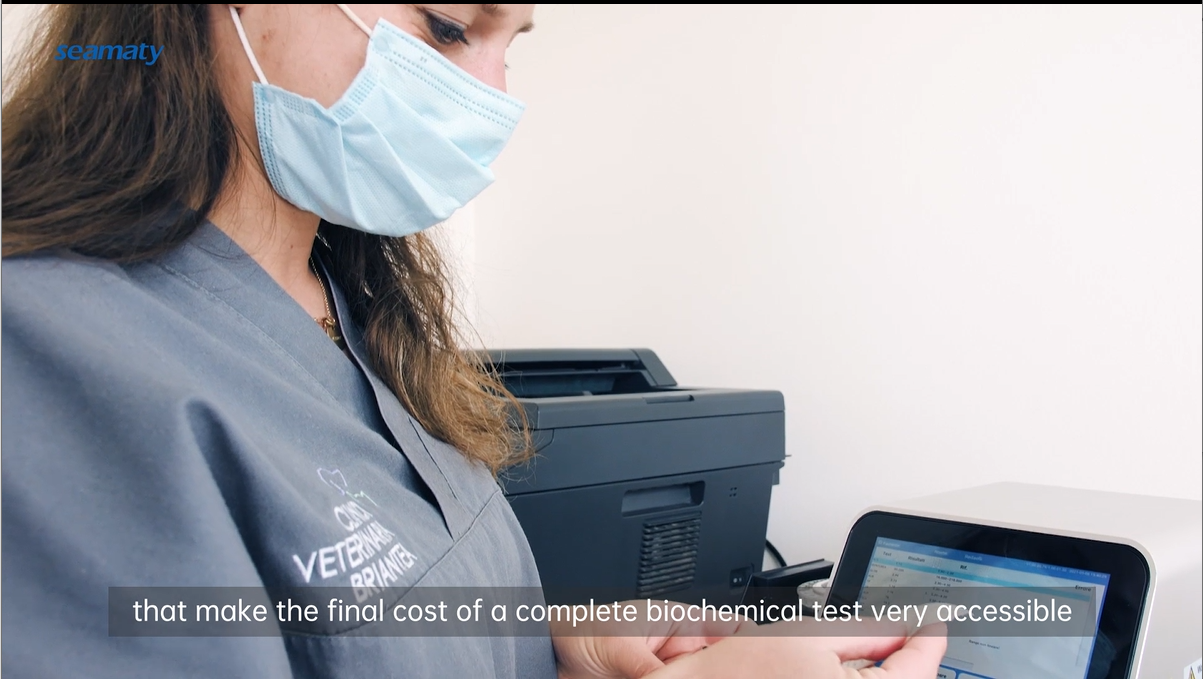Arterial blood gas analysis is a test commonly used in clinical practice to determine the presence of acid-base imbalance and the degree of hypoxia and hypoxia in the body, and is the most commonly used test for rescuing critically ill patients. At present, most blood gas analyzers are capable of testing electrolytes, GLU, HGB and HTC, in addition to routine blood gas indicators. This can quickly provide clinicians with a picture of a patient's acid-base balance and electrolytes.
Compared to conventional
biochemical devices, blood gas analysis has the advantage of being easy and fast to perform and uses less blood. When performing the test, we often find that the blood gas analysis and the biochemical device have the same test items, but the results of some of them are different. We often think that this is due to the differences between different testing systems and different analyzers. When clinicians ask which result is on time when blood gas analysis and biochemistry analysis do not agree, how do we explain this?
Why is "K+" in arterial blood gas analysis lower than in venous blood biochemistry?
Studies have shown that arterial blood gas analysis has a lower K ion concentration than venous blood biochemistry, and that there is a linear relationship between the two. The biochemical K ion results can be roughly inferred from the arterial blood K ion (the calculation method varies somewhat due to differences in population and instrumentation): K+V (venous blood K+) = 0.85 x K+A (arterial blood K+) + 1.14 (mmol/L). The reasons for the difference in results between the two are as follows.
1. The effect of heparin.
For arterial blood blood gas analysis a heparin anticoagulation tube was used. And whole blood was used to test the blood potassium level. Heparin sodium is an acidic mucopolysaccharide ion that can bind plasma K ions to produce heparin potassium, which affects the determination of potassium ions by the ion electrode. The higher the concentration of heparin, the lower the concentration of potassium ions.
2. The waiting time for the test is too long for venous blood.
Ninety-five percent of the blood potassium is present intracellularly. If a venous blood specimen is not tested in time after collection, a few red blood cells are destroyed (hemolysis) and K ions are released into the blood, leading to an increase in potassium. Serum potassium increases by 0.2 mmol/L when specimens are stored at 25°C for 1.5 h and by 2 mmol/L when stored at 4°C for 5 h. Each 1 g of hematocrit released from red blood cells increases the K ion concentration in 1 L of blood by 0.36 mmol/L.
3. Platelets and leukocytes are destroyed.
The destruction of platelets and leukocytes during coagulation and centrifugation of unanticoagulated venous blood leads to the release of intracellular K ions into the serum, thus increasing the K ion concentration in the serum. If a sodium heparin anticoagulation tube is used to draw venous blood, some of the blood will coagulate when the amount of blood collected is not in the proper ratio to the anticoagulant, or if the blood is not mixed adequately after collection. During the clotting process, the K ions in the platelets are separated out into the blood.
What are the reasons for the inconsistency of "GLU" concentration?
1. The GLU concentration in blood gas analysis is higher than that of biochemical serum because, in addition to differences in instrumentation and detection systems, it is related to a decrease in GLU concentration due to the utilization of GLU by tissue cells during the flow of arterial blood through capillaries to venous blood.
2. The isolated venous blood was left at room temperature for too long, and some of the GLU was used by the cells before the assay, resulting in a lower GLU concentration.
Reasons for differences in "HCO3-" concentrations
The lower HCO3- content in arterial blood than in venous serum is related to the lower CO 2 content in arterial blood. It is also related to the different principles of detecting HCO3- concentrations by the 2 instruments. Arterial blood gas analysis is derived from the HCO3- concentration by measuring the partial pressure of CO 2 in plasma, plus a small fraction of physically dissolved CO 2. This is different from the CO 2 enzymatic method used in biochemical analysis, which converts all CO 2 in serum to HCO3- and then determines the concentration.
In addition, the results of Na ions and Cl ions in biochemical and blood gas analyses were basically the same, which may be related to the high concentration of Na ions and Cl ions in blood and the small effect of external interference factors on the results of both tests. The results of the blood gas analyzer for detecting the concentrations of HGB and HCT in arterial blood and the blood routine analyzer for detecting the concentrations of HGB and HCT in venous blood whole blood were basically the same. This is related to the small differences between the concentrations of HGB and red blood cell counts in arterial and venous blood, and the insignificant differences caused by the methodology.

In summary, the results of "Na+, Cl-, HGB, HCT" in arterial blood gas analysis and biochemical venous serum are basically the same and can be directly used for clinical reference. In case of large differences between biochemical and blood gas "K+, GLU, HCO3", it is still recommended that the biochemical test results should prevail.



